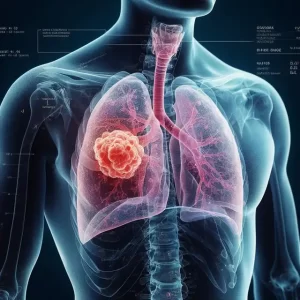Reengineering red blood cells to trigger the immune system to fight COVID-19
- EPA Announces First-Ever Regulation for “Forever Chemicals” in Drinking Water
- Kochi University pioneers outpatient bladder cancer treatment using semiconductor lasers
- ASPEN 2024: Nutritional Therapy Strategies for Cancer and Critically Ill Patients
- Which lung cancer patients can benefit from neoadjuvant immunotherapy?
- Heme Iron Absorption: Why Meat Matters for Women’s Iron Needs
- “Miracle Weight-loss Drug” Semaglutide Is Not Always Effective
PLoS ONE: Reengineering red blood cells to trigger the immune system to fight COVID-19
- Red Yeast Rice Scare Grips Japan: Over 114 Hospitalized and 5 Deaths
- Long COVID Brain Fog: Blood-Brain Barrier Damage and Persistent Inflammation
- FDA has mandated a top-level black box warning for all marketed CAR-T therapies
- Can people with high blood pressure eat peanuts?
- What is the difference between dopamine and dobutamine?
- How long can the patient live after heart stent surgery?
PLoS ONE: Reengineering red blood cells to trigger the immune system to fight COVID-19
In a new study, researchers from McMaster University in Canada modified red blood cells so that they can safely deliver viral proteins that safely trigger the immune system to protect the body from SARS-CoV-2 infection. A promising new vaccine delivery vehicle has been constructed.
Related research results were published in the journal PLoS ONE on March 11, 2022, with the title “Erythro-VLPs: Anchoring SARS-CoV-2 spike proteins in erythrocyte liposomes”.
As SARS-CoV-2 continues to evolve and mutate, the development of new strategies and vaccine technologies is critical to controlling the COVID-19 pandemic and preparing for future outbreaks, the authors said.
In this completely unique method of vaccination, the SARS-CoV-2 spike protein is embedded in the red blood cell membrane, which then forms virus-like particles (VLPs), called Erythro-VLPs. These VLPs were shown to activate the immune system and produce antibodies in mice, and were completely harmless.
“Current vaccine delivery methods tend to elicit dramatic immune system responses with short response times,” said corresponding author Maikel Rheinstadter, a professor in McMaster’s Department of Physics and Astronomy. “Some vaccines that have been developed have shown side effects. This new delivery platform opens up new possibilities for vaccines and therapeutics.”

Erythro-VLP preparation process, picture from PLoS ONE, 2022, doi:10.1371/journal.pone.0263671.
The authors found that red blood cells can be loaded with large doses of viral proteins but are likely to have few side effects, making the new approach more acceptable and more effective than other vaccine regimens.
“We have developed a method that allows us to trigger an immune response without the use of genetic material, and we can to synthesize these VLPs.”
This technology can be quickly adapted to develop vaccines against possible future SARS-CoV-2 variants or new viruses. “This is the kind of creative, interdisciplinary research that McMaster is known for,” said Dawn Bowdish, a professor of medicine at McMaster University and a co-author of the paper . It’s exciting to have a completely different vaccine platform.”
The authors first reported the technique in 2020, when they modified red blood cells so that they deliver drugs throughout the body that could then be targeted to fight infection or treat catastrophic diseases such as cancer and Alzheimer’s disease.
Rheinstadter explained, “This platform makes our own blood cells smart in many different ways. In this case, it’s a vaccine. We’re using our own cells, much like nanorobots in our bodies. , as soon as they see a disease, they can fight it.”
Reference:
Sebastian Himbert et al. Erythro-VLPs: Anchoring SARS-CoV-2 spike proteins in erythrocyte liposomes. PLoS ONE, 2022, doi:10.1371/journal.pone.0263671.
PLoS ONE: Reengineering red blood cells to trigger the immune system to fight COVID-19
(source:internet, reference only)
Disclaimer of medicaltrend.org
Important Note: The information provided is for informational purposes only and should not be considered as medical advice.



